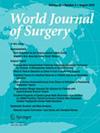影响资源有限环境中的创伤护理:坦桑尼亚基于网络的创伤登记倡议的经验教训。
IF 2.3
3区 医学
Q2 SURGERY
引用次数: 0
摘要
背景创伤严重影响坦桑尼亚的医疗保健。缺乏基于医院的标准化最小创伤数据集给政策制定者带来了更多挑战。在其他资源有限的国家,创伤系统和登记处的实施降低了受伤死亡率。2013 年,我们在坦桑尼亚 Muhimbili 骨科研究所(MOI)引入了电子创伤登记系统 iTRAUMATM,但也发现了一些不足之处。2023 年,我们引入了一个强大的网络创伤登记平台。本研究评估了在 Muhimbili 骨科研究所实施该平台的可行性和实用性,并总结了与现有系统相比所面临的挑战、经验教训和成果。与当地利益相关者进行的半结构式访谈确定了面临的挑战和需要改进的领域。结果来自 2930 名患者的数据显示,59% 的伤害来自道路交通碰撞(RTC),43% 的患者乘坐非救护车到达医疗点。我们的研究结果表明,非救护车到达与较高的受伤严重程度(p < 0.026)、死亡率(p < 0.017)和延迟到达医院(p < 0.004)相关,这突出了及时转运在创伤管理中的关键作用。新平台发现了创伤救治方面的不足,平均到达救治时间为 29.89 分钟,这促使医疗中心开展创伤培训,以提高临床医生的能力。通过提高数据的完整性、及时性和可用性,该平台还显示出优于现有系统的优势。所面临的挑战包括获得对平台功能的支持、技术集成和管理变革。通过持续的沟通,利益相关者接受并支持了该平台。它克服了数据完整性、及时性和决策可用性方面的现有挑战。积极的反馈促使计划将该平台扩展到其他医院,从而有利于临床基准的制定和创伤预防工作。确保可持续性需要卫生部的参与、持续的培训、功能的增强以及全球伙伴关系的加强。本文章由计算机程序翻译,如有差异,请以英文原文为准。
Impacting trauma care in resource-limited settings: Lessons learned from Tanzania's web-based trauma registry initiatives.
BACKGROUND
Trauma significantly impacts Tanzanian healthcare. Lacking standardized hospital-based minimal trauma data sets places further challenges for policymakers. In other resource-limited countries, implementing trauma systems and registries has reduced injury mortalities. In 2013, we introduced an electronic trauma registry, iTRAUMATM at the Tanzanian Muhimbili Orthopedic Institute (MOI) but noted several drawbacks. In 2023, we introduced a robust web-based trauma registry platform. This study assesses the feasibility and utility of implementing the platform at MOI and summarizes challenges, lessons, and results compared to existing systems.
METHODS
This prospective observational study involved clinicians collecting data directly on the platform at the point-of-care, following specific training. Semi-structured interviews with local stakeholders identified challenges and areas for improvement. Data were reported from July to December 2023.
RESULTS
Data from 2930 patients showed 59% of injuries were from road traffic collisions (RTCs), with 43% of patients arriving at MOI by non-ambulances. Our findings show that non-ambulance arrivals were associated with higher injury severity (p < 0.026), mortalities (p < 0.017), and delayed hospital arrival (p < 0.004), underscoring the critical role of prompt transport in trauma management. The new platform identified trauma care gaps, with a mean arrival-to-care time of 29.89 min, prompting trauma training at MOI to enhance clinician capacities. It also demonstrated superiority over existing systems by improving data completeness, timeliness, and usability. Challenges included gaining support for the platform's functionality, technology integration, and navigating administrative changes. With continued communication, stakeholder acceptance and support were achieved.
CONCLUSION
The web-based platform has become MOI's standard trauma database, demonstrating its feasibility and utility. It overcame the existing challenges of data completeness, timeliness, and usability for policymaking. Positive feedback has prompted plans to expand the platform to other hospitals, benefiting clinical benchmarking and trauma preventive efforts. Ensuring sustainability requires involvement from the Ministry of Health, ongoing training, functionality enhancements, and strengthened global partnerships.
求助全文
通过发布文献求助,成功后即可免费获取论文全文。
去求助
来源期刊

World Journal of Surgery
医学-外科
CiteScore
5.10
自引率
3.80%
发文量
460
审稿时长
3 months
期刊介绍:
World Journal of Surgery is the official publication of the International Society of Surgery/Societe Internationale de Chirurgie (iss-sic.com). Under the editorship of Dr. Julie Ann Sosa, World Journal of Surgery provides an in-depth, international forum for the most authoritative information on major clinical problems in the fields of clinical and experimental surgery, surgical education, and socioeconomic aspects of surgical care. Contributions are reviewed and selected by a group of distinguished surgeons from across the world who make up the Editorial Board.
 求助内容:
求助内容: 应助结果提醒方式:
应助结果提醒方式:


